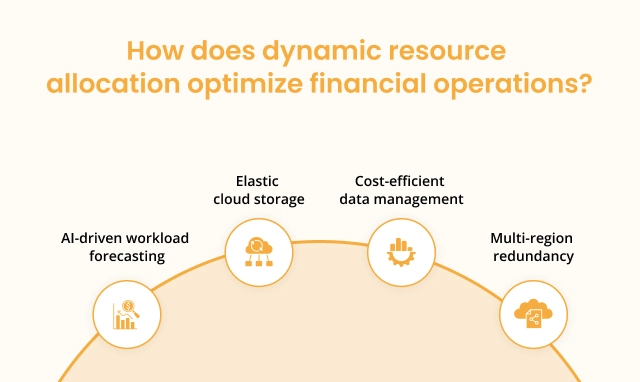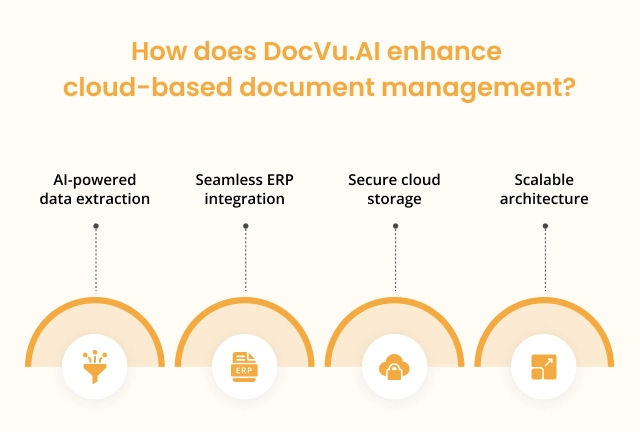In April 2024, Bloomberg revealed a 45% year-over-year surge in cyberattacks targeting financial institutions still reliant on on-premise document systems, with 63% of breaches exploiting outdated access controls. Concurrently, a Deloitte survey found that 58% of CFOs rank “scalability bottlenecks” as their foremost challenge during fiscal year-end audits. These findings expose a dual crisis: legacy systems that can’t handle growing data volumes and the escalating risks they pose. Cloud-based document management offers a solution by combining ironclad security with scalable operations, enabling finance and accounting teams to balance operational efficiency with compliance.
How do cloud-based platforms ensure audit readiness?
Audit readiness in the cloud era hinges on eliminating inefficiencies found in traditional methods. Legacy audit workflows often drown in scattered files, manual data entry, and disjointed reconciliation processes, creating gaps that delay compliance. In contrast, cloud-based systems unify financial records into searchable repositories with automated version control and granular access logs. This shift enables real-time visibility into document histories, speeding up audit preparation time while ensuring regulators see only accurate, tamper-evident records.
For instance, firms using these platforms report resolving audit queries 50% faster by instantly retrieving cross-referenced invoices, approvals, and payment trails.
Key Features
- Automated audit trails: Cloud platforms log every document action, creating a transparent and traceable history for auditors. Finance teams can retrieve any record instantly, reducing time spent on document verification.
- Instant access to compliance reports: Pre-configured templates generate real-time reports aligned with regulatory requirements. Automated compliance tracking minimizes the risk of errors and ensures financial statements remain audit-ready throughout the year.
- Role-based access control: Secure authentication ensures only authorized personnel can modify or review sensitive data. Customizable permissions prevent unauthorized access to confidential financial information, reducing the likelihood of internal fraud.
- AI-powered anomaly detection: Identifies irregular transactions or missing documentation, reducing audit discrepancies. Early detection of inconsistencies allows finance teams to resolve issues before they escalate into compliance violations.
How does dynamic resource allocation optimize financial operations?
Seasonal spikes such as tax filings and quarterly closures put a strain on static IT infrastructures. Cloud systems dynamically scale resources, enabling finance teams to handle increased workloads without disruptions or excessive costs. Static storage and computing power often result in inefficiencies, either leading to system slowdowns or unnecessary expenditures on underutilized infrastructure. Cloud-based solutions adapt in real-time to changing demands.

- AI-driven workload forecasting: Predicts resource demand based on historical financial data. By analyzing transaction volumes, cloud platforms allocate processing power efficiently to prevent system slowdowns.
- Elastic cloud storage: Expands or contracts storage capacity based on real-time transaction volumes. Businesses can scale up resources during high-demand periods and downsize after peak cycles, optimizing costs.
- Cost-efficient data management: Automatically archives outdated records to lower-cost storage solutions. Unused or redundant data is systematically categorized, reducing operational expenses without compromising accessibility.
- Multi-region redundancy: Ensures uptime during peak financial reporting periods. Distributed cloud infrastructure prevents service disruptions caused by localized outages or cyber incidents.
How does AI enhance fraud prevention in financial transactions?
Traditional fraud detection relies on rule-based systems that often struggle to catch evolving threats like invoice manipulation or money laundering. Cloud-based AI models analyze financial data patterns, vendor histories, and market behavior to detect fraudulent activities in real-time. Fraudulent schemes frequently bypass conventional detection methods by exploiting loopholes in manual oversight. AI-powered fraud prevention adapts to changing tactics.
- Network graph analysis: Maps relationships between transactions to uncover hidden fraud patterns. Suspicious transaction links are flagged, enabling early intervention.
- Natural language processing (NLP): Reviews contract terms for misleading clauses or discrepancies. Financial agreements are scanned for irregularities, preventing contract-based fraud.
- Predictive cash flow monitoring: Detects irregularities in receivables and payables. Deviations from expected financial patterns trigger automated alerts, reducing financial risks.
- Regulatory compliance screening: Ensures all transactions align with anti-money laundering frameworks. Businesses can cross-check financial activity against global compliance standards, minimizing legal exposure.
How does DocVu.AI enhance cloud-based document management?
Finance and accounting teams require precision, security, and efficiency in document handling. DocVu.AI integrates AI-driven document processing with cloud-based management, ensuring high accuracy while maintaining compliance. Its intelligent automation simplifies complex workflows, enabling finance teams to process documents faster and with greater reliability. Many financial institutions struggle with fragmented data spread across multiple platforms. DocVu.AI addresses this by consolidating document management into a single, efficient ecosystem.

- AI-powered data extraction: Achieves over 99% accuracy in invoice processing and KYC verification. Automating data capture significantly reduces human errors, ensuring accuracy in financial records.
- Seamless ERP integration: Connects with existing enterprise resource planning systems for smooth financial operations. Synchronizing documents with ERP systems allows for a more streamlined and automated workflow.
- Secure cloud storage: Centralizes financial data with encrypted access controls. Organizations benefit from multi-layered security that safeguards sensitive financial records from unauthorized access.
- Scalable architecture: Adapts to high-volume financial transactions, optimizing operational efficiency. Whether managing a few hundred or millions of documents, the system adjusts to handle workload variations seamlessly.
Conclusion:
Cloud-based document management is no longer an option but a necessity for finance and accounting teams managing increasing security threats and operational complexity. By automating audit trails, optimizing resource allocation, and enhancing fraud detection, modern cloud platforms shift document management from a reactive process to a proactive strategy. As financial regulations become stringent and data volumes continue to expand, organizations that adopt cloud solutions will not only secure their current operations but also build resilience for the future. The transition to the cloud is not just about technology but about creating a more secure and agile financial ecosystem.






